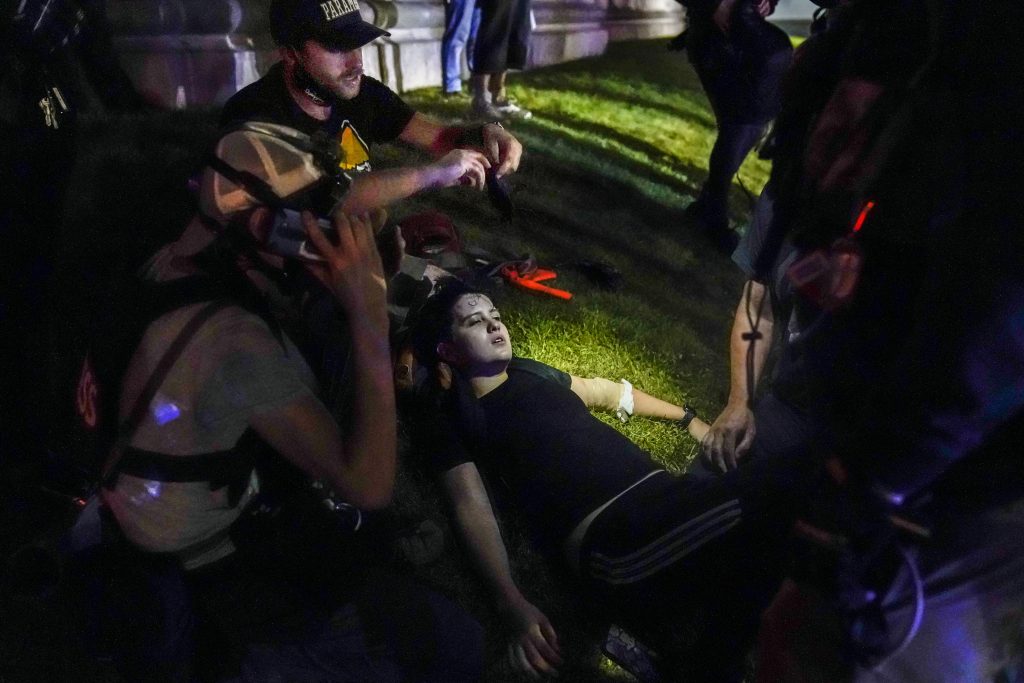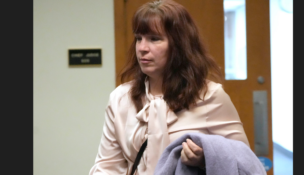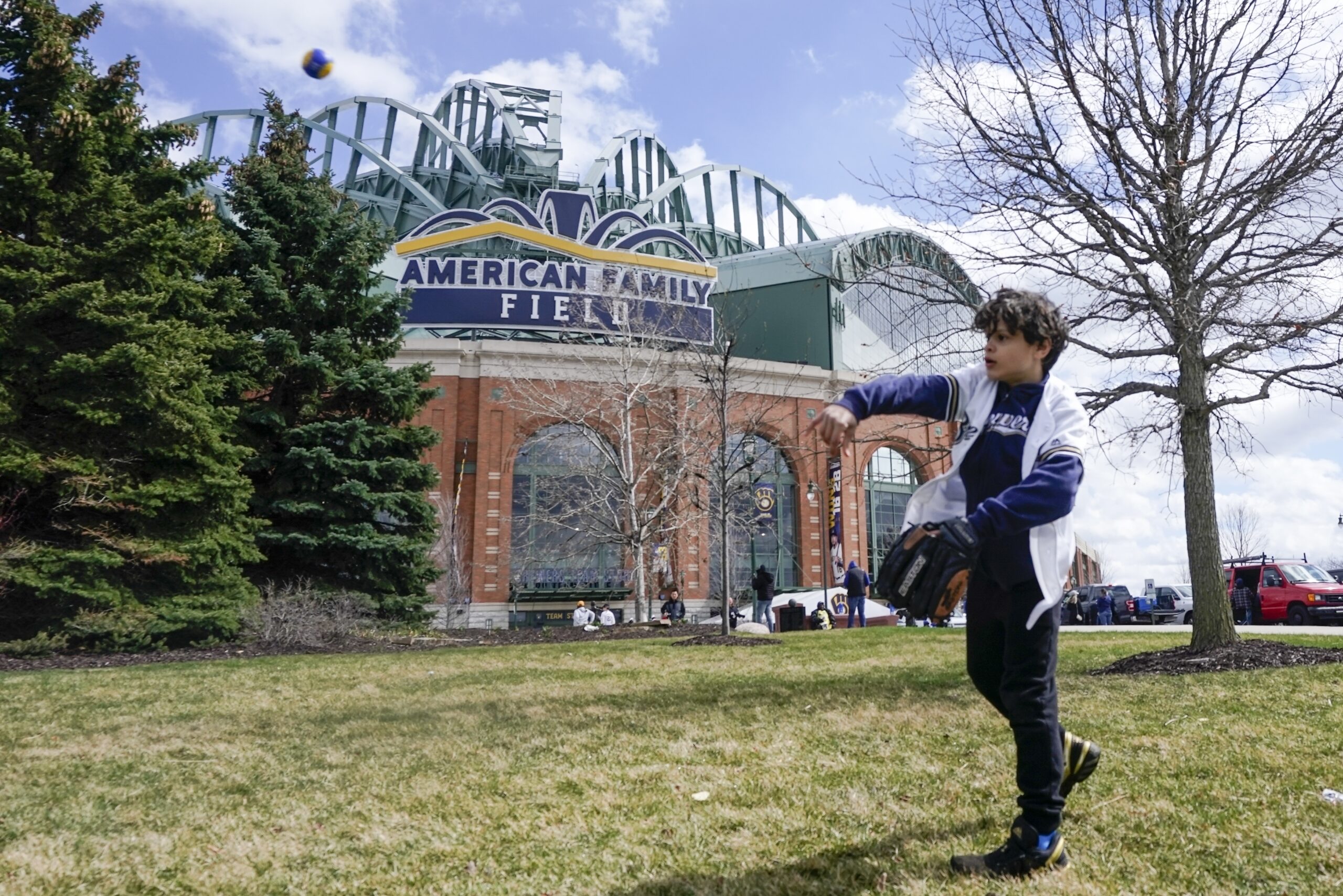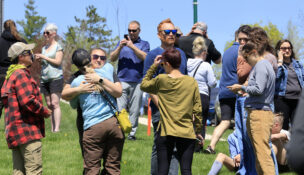Lawsuit over Kenosha shootings: Police enabled armed militia
By: Associated Press//October 15, 2021//
Lawsuit over Kenosha shootings: Police enabled armed militia
By: Associated Press//October 15, 2021//

By TODD RICHMOND
Associated Press
MADISON, Wis. (AP) — A man who was shot in the arm by Kyle Rittenhouse during a protest last year against police brutality in Wisconsin has filed a federal lawsuit alleging police enabled the violence by allowing an armed militia to have free run of the streets during the demonstration.
Rittenhouse shot Joseph Rosenbaum, Anthony Huber and Gaige Grosskreutz with an AR-style semiautomatic rifle during the protest in Kenosha on Aug. 25, 2020, after an officer shot Jacob Blake two days earlier.
Rosenbaum and Huber died. Grosskreutz was wounded in the arm but survived.
Prosecutors have charged Rittenhouse, who was 17 at the time, with multiple counts, including homicide. He has argued he fired in self-defense after Rosenbaum and Huber attacked him and Grosskreutz ran up to him armed with a handgun. Rittenhouse’s trial is slated to begin next month.
Grosskreutz’s lawsuit filed Thursday alleges that Rittenhouse, who lives in Antioch, Illinois, had joined white supremacist militia members who had answered a call on social media to travel to Kenosha and protect businesses during the protest. Rittenhouse and Grosskreutz are white; so were Rosenbaum and Huber.
The filing maintains police knew the militia was there to hurt people, pointing to social media responses such as “Counter protest? Nah. I fully plan to kill looters and rioters tonight” and “Armed and ready. Shoot to kill tonight.” The identities of the posters weren’t given in the lawsuit.
Regardless, police welcomed them, allowing them to patrol the streets with their guns after curfew. One officer told the militia “we appreciate you guys,” according to the lawsuit. Police later funneled protestors toward the militia, telling members they could take care of them, the lawsuit alleges.
Numerous officers saw Rittenhouse before and after the shootings but never asked him for identification, detained him or disarmed him, and let him walk past them even though people were yelling that he had shot people and he still had his rifle slung over his chest, according to the lawsuit.
“If a Black person had approached police with an assault rifle, offering to patrol the streets with the police, he most likely would have been shot dead,” the lawsuit said. “If a Black child had shot three citizens with an assault rifle and was seen walking away from the scene of the shooting with the assault rifle in hand, while other citizens yelled he was an active shooter, he would have been shot dead.”
The lawsuit alleges Kenosha police, the Kenosha County Sheriff’s Department and the city committed multiple constitutional violations, including conspiracy to obstruct justice, equal protection and free speech violations, and failure to intervene. The filing seeks unspecified damages. Messages were left Friday with city and council officials seeking comment on the lawsuit.
Huber’s family filed a similar federal lawsuit in August alleging police facilitated the shootings. That case is pending.
The protests began after a white Kenosha officer shot Blake, who is Black, in the back during a domestic disturbance. Blake was wanted on a felony warrant and resisted arrest. Officer Rusten Sheskey shot him after he turned toward him holding a knife, according to investigators. The shooting left Blake paralyzed from the waist down.
Legal News
- Wisconsin lawyers file University of Wisconsin public records request seeking answers to protests
- Wisconsin Supreme Court issues orders amending Supreme Court rules and Wis. Stats.
- EXCLUSIVE: Former Milwaukee ‘big law’ partner attacks news media for bias against Trump
- Former Milwaukee election official fined for obtaining fake absentee ballots
- Contract dispute prevents airing of 15 regional sports networks, impacts Brewers
- Wis. middle school focuses on recovery as authorities investigate shooting
- Gov. Evers seeks applicants for Sheboygan and Green County Sheriffs
- North Carolina man who harbored Nazi memorabilia and attacked Black and Latino men sentenced to 41 months
- Nation grieves with families of officers killed in NC
- Amended complaint filed in federal court against State Bar of Wisconsin seeks punitive damages
- United Healthcare suit against cancer drug distributor time-barred
- Trump’s Wisconsin visit warns of jail time if he violates a trial gag order
WLJ People
- Power 30 Personal Injury Attorneys – Russell Nicolet
- Power 30 Personal Injury Attorneys – Benjamin Nicolet
- Power 30 Personal Injury Attorneys – Dustin T. Woehl
- Power 30 Personal Injury Attorneys – Katherine Metzger
- Power 30 Personal Injury Attorneys – Joseph Ryan
- Power 30 Personal Injury Attorneys – James M. Ryan
- Power 30 Personal Injury Attorneys – Dana Wachs
- Power 30 Personal Injury Attorneys – Mark L. Thomsen
- Power 30 Personal Injury Attorneys – Matthew Lein
- Power 30 Personal Injury Attorneys – Jeffrey A. Pitman
- Power 30 Personal Injury Attorneys – William Pemberton
- Power 30 Personal Injury Attorneys – Howard S. Sicula











